|
| |
Back to private
aircraft
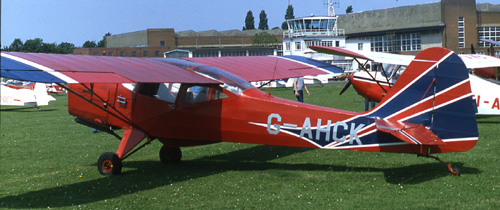 |
During the second world war, the American
Taylorcraft design (which in the USA became the Piper Cub) was
developed in Britain as well by the Auster company in Leicester.
After the war, many wartime Austers were converted to civil
configuration, but new variants were built as well. One of the best
was the Auster J1N Alpha, which was powered by a 120hp DH Gipsy
Major engine and had proportionally larger tail surface. It cruised
at 105mph for up to 200 miles with three people on board. 44 were
built from 1956 onwards. This one was at
Cranfield in July 1983. |

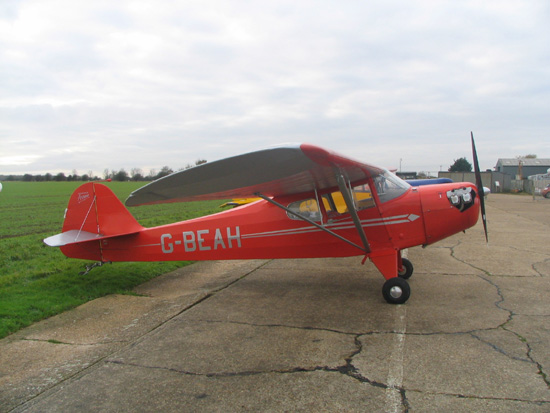 |
The Auster Arrow was a two seat (side by
side) development of the Auster theme, and made its first flight in
1946.
Two variants were made: the J2 (bottom
picture, at Seething in December 2005) was powered by a Continental
C85 engine; 15 were built. The very similar J4 (top picture, at
Badminton in April 1988) was powered by a 90hp Blackburn Cirrus engine;
27 of those were built. The small engines made
it relatively underpowered for the high frontal area. Nevertheless
it managed to cruise at 90mph for a range of 320 miles. Only 27 were
built.
|
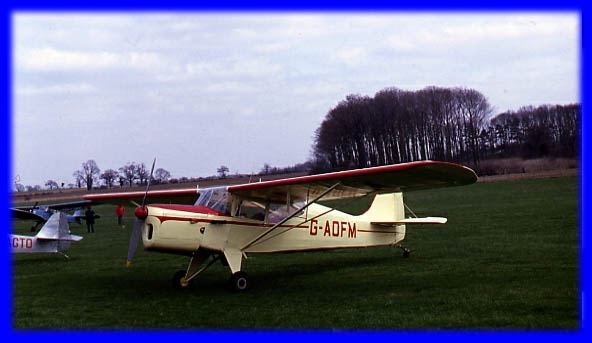 |
The Auster J5P Autocar was a four seat
development of the Auster theme, first appearing in 1955. It was
powered by a 145hp Blackburn Cirrus Major engine, giving it a
cruising speed of 110mph and a range of around 450 miles. 23 were
made. The similar J-5B and J-5G Autocars were built in slightly
larger numbers and differed only in engine.
This J-5P was at Old Warden in April 1979. |
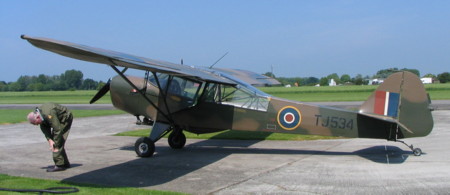
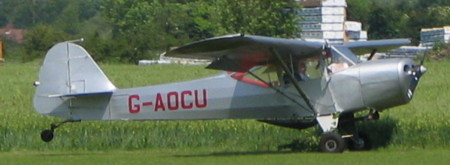 |
The Auster 5 is essentially the wartime
Auster converted for civil use. Over 250 were converted. Like the J1
series which followed, the Auster 5 is a three seater. It is powered
by a 130hp Lycoming engine which gives it a cruising speed of 110mph
and range of 250 miles. The extensive glazing to the rear is
interesting to compare with the Piper Cub, which was developed from
the same original design. Top picture:
Alpha
at Breighton in June 2007. Lower picture: Similar aircraft but
without the rear glazing pictured just after clipping the top of a
tree on final approach - note the foliage festooned round the
starboard main wheel! |
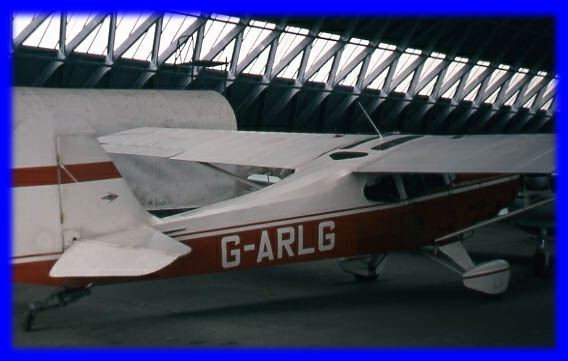 |
The Beagle Husky is an updated version of the
Auster J-1 and J-2 range, which first flew in 1960. It is a three
seater and comes in three flavours: the D4 with 108hp, D5 with 160
or 180hp and the D6 with similar engines. It continues the basic
Auster layout, which was tried and tested but was unfortunately
starting to look dated beside the flood of Pipers and Cessnas which
started to appear in the 1960s. As a result only just over 230 were
built, the majority by OGMA in Portugal for the Portuguese air
force.
The Auster company was acquired in 1960 by
British Executive and General Aircraft Limited, which inevitably
became known as Beagle and started naming its aircraft after dogs!
This is a D4 Husky, based at Sunderland in the
mid 1970s. |
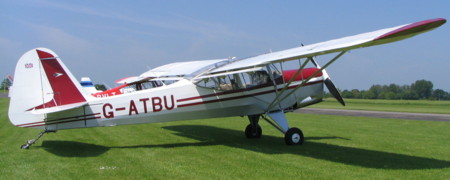
 |
The Beagle A61 Terrier was essentially the
military Auster mark 6, `civilianised' by fitting a new interior and
enlarged tail. Most retained the original De Havilland Gipsy major
145hp engine, though some were retrofitted with 160hp Lycoming O-320
flat four engines. The first converted machine flew in April 1961.
It was quite popular because it was quite cheap, but like the Husky
suffered at the hands of American competition. Only 64 were
eventually converted. Note in particular the large trailing edge
split flaps on this version. These
pictures were taken at Breighton in June 2007. The top picture is a
standard Terrier. The lower picture is actually a converted Auster
T.7, but being essentially the same airframe is still known as a
Terrier in civilian guise. |
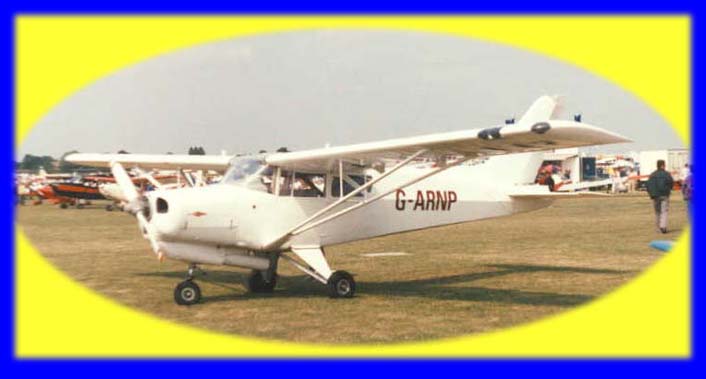 |
The Beagle A109 Airedale was Beagle's answer
to the Cessna 172. It was basically an Auster airframe, fitted with
a tricycle undercarriage and swept fin. its 180hp Lycoming O-360
engine enabled it to cruise at 135mph for a range of 940 miles.
Unfortunately these cosmetic advances were not sufficient to attract
potential buyers, and production ended after only 43 had been built.
This one was at Cranfield, date uncertain. |
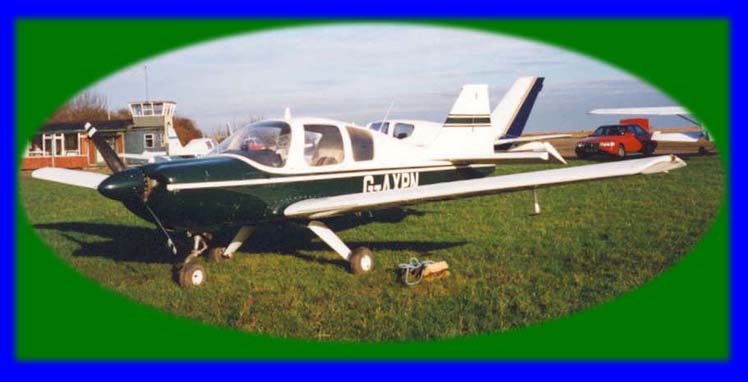 |
The Beagle B121 Pup is quite a different
proposition. It is the most delightful handling aircraft I have
flown. The controls are beautifully harmonised and very responsive.
Some Pups (such as the prototype, which first flew in April 1967)
were powered by a 100hp engine, but this was not really adequate,
and most were fitted with 150hp Lycoming O-320s. It is really a 2+2
seater; gross weight is 1,925lb, empty weight 1,090lb, but its one
real drawback is range - only 440 miles. One unusual feature is that
it has control columns, military style, rather than yokes: this was
a deliberate design decision taken because of its aerobatic
capabilities, and in my opinion adds to its ease of handling.
This is the one I owned a share of for a while,
pictured at Bourn in Spring 2000. |





|